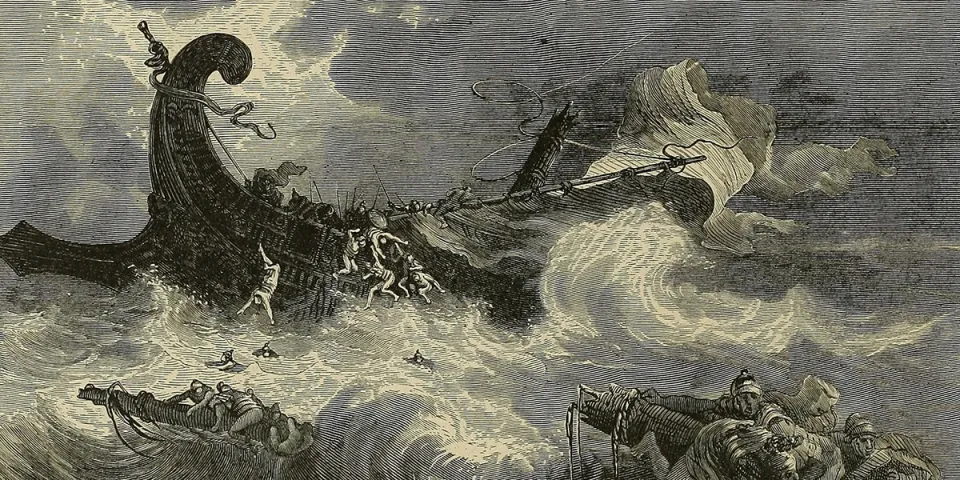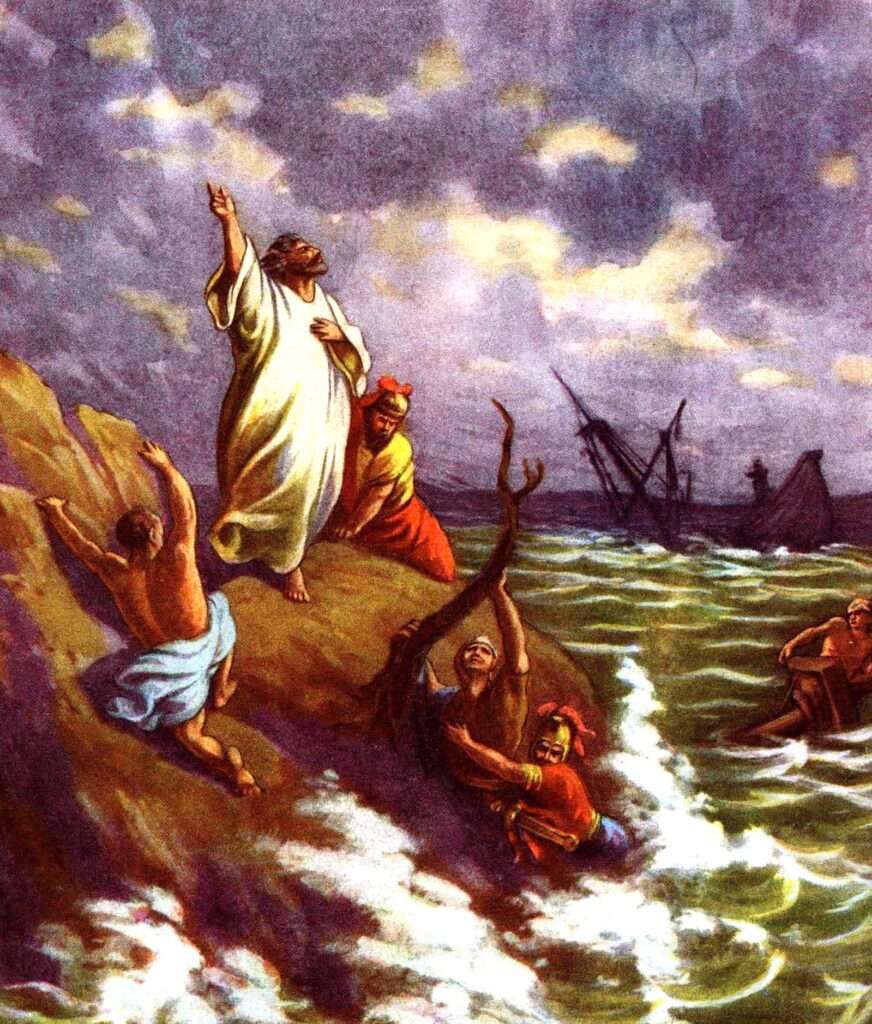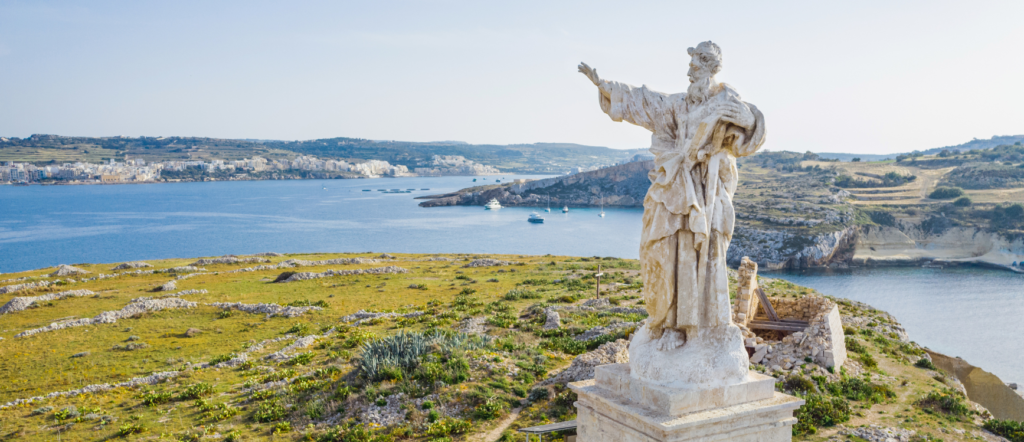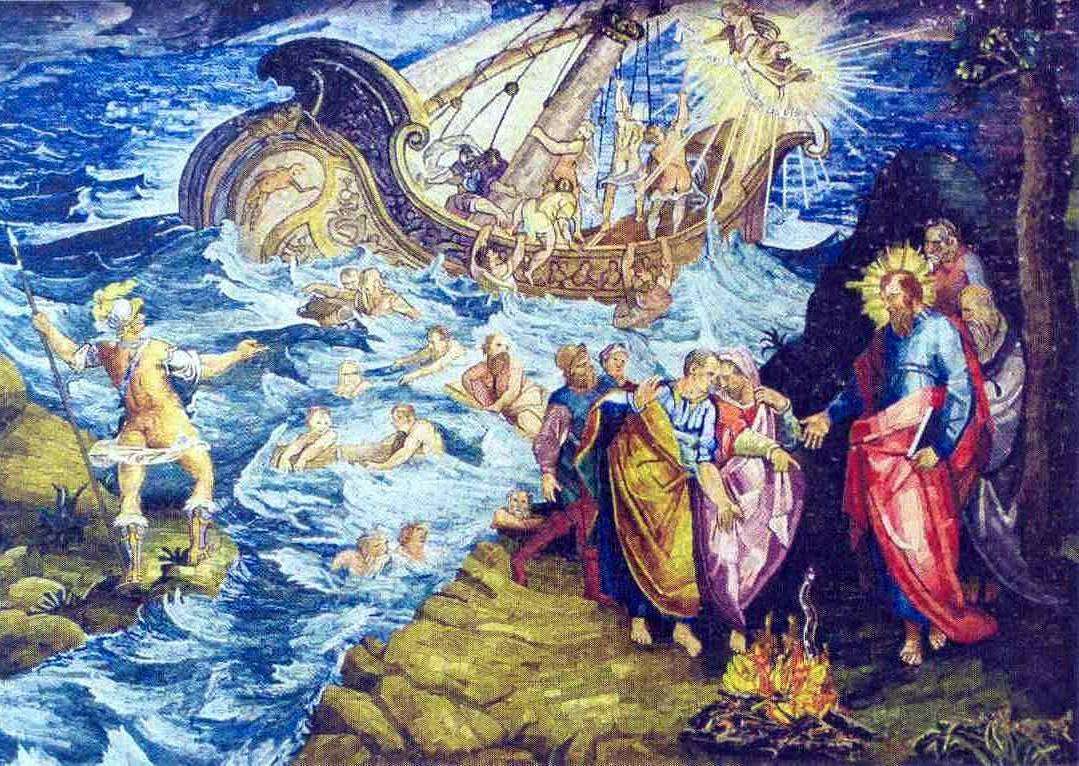Table of Contents
ToggleSt Paul’s Shipwreck in Malta
History, Faith, and Celebration
Malta’s history is a tapestry woven with layers of culture, conquest, and faith. Among the most enduring threads in this fabric is the story of St Paul’s shipwreck, a biblical event that has shaped the island’s Christian heritage for nearly two millennia. For Maltese people, the shipwreck of St Paul is not merely an episode recorded in scripture; it is a cornerstone of identity, celebrated each year with devotion, pageantry, and cultural pride.
The Biblical Account
The story originates in the Acts of the Apostles (chapters 27–28). Around the year 60 AD, Paul, then a prisoner being transported to Rome to stand trial, embarked on a perilous sea journey. The voyage was marked by storms, danger, and uncertainty. Ultimately, the vessel carrying Paul and more than 270 others ran aground on an island the Bible identifies as Melite—widely believed to be Malta.
According to the account, the passengers survived the shipwreck and were met with “unusual kindness” by the islanders. It was winter, and the locals lit a fire to warm the shipwrecked strangers. While gathering firewood, Paul was bitten by a viper but suffered no harm, an incident that astonished the Maltese. He went on to heal many people on the island, including the father of Publius, the chief official.
These acts of healing and faith led to Paul being revered as the bringer of Christianity to Malta. His stay, which lasted three months, planted the seeds of a faith that would become central to Maltese culture for centuries to come.

Historical and Cultural Significance
Though some historians debate the exact details of the biblical narrative, the Maltese firmly embrace the shipwreck as an integral part of their history. The event is considered the beginning of Malta’s Christian identity. By the 4th century, evidence shows a thriving Christian community on the island. Today, more than 95% of Maltese identify as Roman Catholic, and churches dedicated to St Paul stand as symbols of this enduring legacy.
St Paul’s Bay in the north of Malta is traditionally associated with the shipwreck site. The area features monuments, churches, and even a small island called St Paul’s Island, which carries a statue of the saint looking out over the sea. Pilgrims and tourists alike visit these locations to connect with the biblical story and the Maltese devotion to Paul.
Another important landmark is the Church of St Paul’s Shipwreck in Valletta, Malta’s capital. Built in the 16th century, it houses relics linked to the saint, including a fragment of the column on which he was allegedly beheaded in Rome and a bone from his wrist. The church stands as a spiritual and cultural anchor in the heart of the city.
The Feast of St Paul
Every year on February 10th, Malta celebrates the Feast of St Paul’s Shipwreck (Festa tan-Nawfraġju ta’ San Pawl), one of the most significant religious and cultural events on the island. The feast is both a religious solemnity and a national holiday, reflecting Paul’s dual role as spiritual father and protector of Malta.
Valletta becomes the center of the celebration. The church dedicated to St Paul is adorned with elaborate decorations, and solemn Masses are held to honor the saint. The highlight of the feast is the grand procession through the streets of Valletta, where a statue of St Paul is carried on the shoulders of devotees, accompanied by hymns, prayers, and bursts of traditional fireworks. Brass bands add a festive atmosphere, while local families prepare special foods to mark the occasion.
For many Maltese, the feast is more than tradition—it is an affirmation of identity. It ties them to their Christian roots, uniting faith and nationhood in a vivid display of devotion.

Beyond Religion: A Cultural Experience
While the shipwreck of St Paul is primarily a religious story, it has also become a cultural and touristic attraction. Visitors to Malta often find themselves captivated by the way faith is interwoven with daily life. The Feast of St Paul’s Shipwreck is an excellent opportunity for travelers to experience Malta’s culture firsthand.
Tourists who attend the celebrations witness the unique blend of solemnity and festivity that characterizes Maltese festas. Beyond the religious ceremonies, streets come alive with food stalls, music, and fireworks, offering a sensory experience that reflects the warmth and hospitality described in the biblical narrative.
Local cuisine plays its part too. Traditional foods such as qassatat (pastry filled with ricotta or peas), bigilla (broad bean dip), and Maltese bread are enjoyed in abundance, while the sharing of meals echoes the biblical spirit of welcome shown to Paul and his companions.

A Living Legacy
What makes the story of St Paul’s shipwreck so powerful is not just its place in history, but its enduring relevance. For nearly 2,000 years, the Maltese have carried this story through generations, embedding it into their faith, culture, and national identity. Whether one interprets it as a historical fact, a religious miracle, or a symbolic tale, the impact is undeniable.
The shipwreck has given Malta more than a patron saint—it has given the island a narrative of resilience, survival, and faith. From the stormy seas of Paul’s journey to the vibrant processions of modern-day Valletta, the story continues to inspire.
For travelers, the shipwreck of St Paul offers more than a historical footnote; it is a gateway to understanding Malta itself. It reveals how a small island in the Mediterranean became a beacon of faith, how stories can shape nations, and how traditions can keep history alive.
The shipwreck of St Paul in Malta is not merely an ancient story—it is a living tradition. Rooted in scripture and carried forward through faith and culture, it represents the beginning of Malta’s Christian journey and a cornerstone of its national identity. Whether celebrated through the solemn rituals of the feast, admired in the churches dedicated to the saint, or remembered at St Paul’s Bay, the event remains a vibrant part of Maltese life.
For anyone visiting Malta, experiencing the legacy of St Paul’s shipwreck is more than a historical excursion—it is an encounter with the soul of the island, where history, faith, and celebration intertwine.



